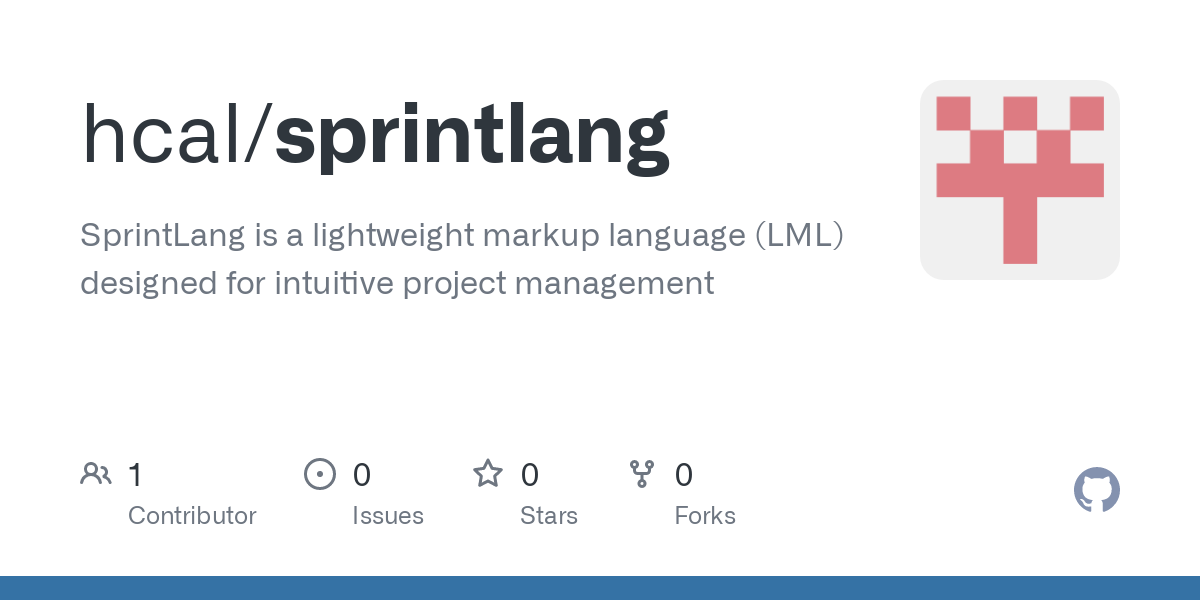Hello everyone!
I’m excited to introduce you to SprintLang, my first open-source project, an experiment born out of my own need for a more organized approach to project management. I realize it might be a niche solution, but I believe sharing it can lead to valuable feedback and, who knows, it might just be the tool someone out there didn’t know they needed!
SprintLang is a Lightweight Markup Language (LML) specifically designed to simplify the complexities of project management. It provides a structured way to define and manage projects using plain text files, similar to how you’d use markdown.
The design philosophy behind SprintLang is centered on readability and writability, striving to maintain a balance between simplicity for human users and being easily parsed by computer programs. It sould be expressive enough to cater to the diverse needs project management while keeping the user interface as simple as possible.
Why plain text? The beauty of plain text is its simplicity and universal compatibility. It doesn’t require any specific software and can be read and edited on any device. This makes SprintLang a versatile tool for project management that isn’t tied to a specific platform or toolset. I plan to write some tooling around the format, but I don’t want it to be required. It also suits my CLI first workflows.
SprintLang is open-source and licensed under the MIT License, one of the most permissive licenses. This means you’re free to use, modify, and distribute SprintLang however you like, as long as you include the original copyright and license notice. I chose the MIT License to encourage the widest possible use and adaptation of SprintLang.
While SprintLang is currently in its early stages, I believe it has the potential to be a powerful tool for project management. I’m eager to see how it can grow and improve with community input and contributions. If you’re interested in contributing to SprintLang, whether it’s providing feedback, suggesting features, reporting bugs, etc, I would love to hear from you!



I agree it’s seems like a subset of YAML.
IMO it must be a YAML because there is a lot of tool and libraries existing for this language. You can easily build a syntax validators for you schema and it allows developer to extends it easily.
Or an alternative solution could be to use more the YAML frontmatter to put the data.